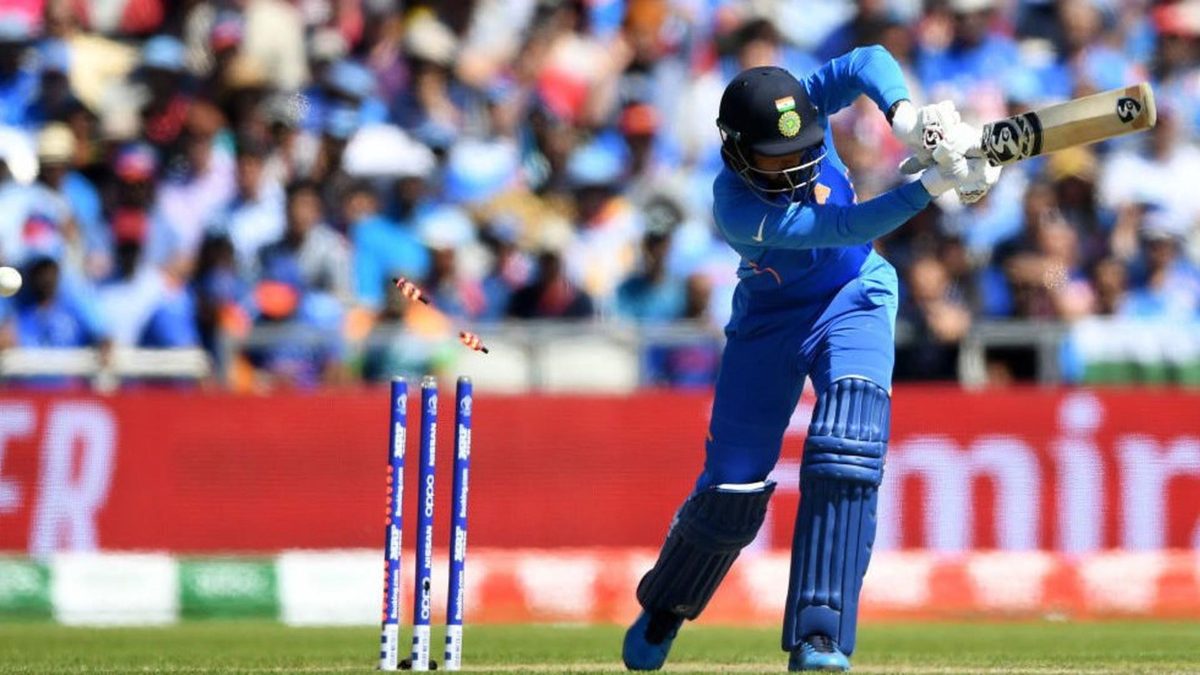
Despite having turned in three solid performances, KL Rahul isn’t yet convinced that he is delivering his best as an opening batsman for India at the 2019 World Cup.
Despite having turned in three solid performances, KL Rahul isn’t yet convinced that he is delivering his best as an opening batsman for India at the 2019 World Cup.
Rahul was promoted to the top of the order following a thumb injury to Shikhar Dhawan, which eventually ruled the latter out of the tournament. In his three gigs at the top, Rahul has made scores of 57, 30 and 48 – not bad numbers by any means.
But in a top-heavy Indian batting order, Rahul is barely scratching the surface with those numbers. India have come out with a clear strategy at the World Cup – for their top three to bat until around the 40th over to facilitate Hardik Pandya and the middle order to come in and tee away.
Rahul has made the right kind of starts to fulfill those expectations, but has squandered them, often through bad shot selection, as in the game against Afghanistan, where he attempted an ill-advised reverse sweep early in the innings, after India had lost Rohit Sharma cheaply.
India secure yet another victory in this World Cup after beating the West Indies by 125 runs. Another brilliant bowling display led by Shami (4-16), Bumrah (2-9), and Chahal (2-39) lifts India to second in the table.
Scoreboard 👇 #INDvWI #CWC19https://t.co/1Imjntbq92 pic.twitter.com/QU3nh9dNyi
— Wisden (@WisdenCricket) June 27, 2019
“A bit disappointing,” Rahul said after India’s win over West Indies on Thursday, June 27. “After doing the hard work, and after getting through the first 10 overs or 15 overs, or as an opening batsman, to get the first 25-30 runs is the hardest time. And to do that, and when the time comes to accelerate and maybe take the game deeper so our lower order can come in and play freely… we know when they come after the 35th over or at the 40, they can do maximum damage.
“So it’s important that we do that and that’s the plan, that’s the role of the top three-top four. A bit disappointed that I haven’t been able to do that. But it won’t worry me that much because there are a lot of things I’m doing right. And I know that the mistakes I’ve made, I can learn from them and get better.”
After the belligerent displays against Australia and Pakistan, characterised by scores well in excess of 330, India’s batting has slightly faltered in the last two games. Against Afghanistan, the batsmen arguably could not adjust to the pace of the surface as well they would have liked and ended up with an unflattering 224-8.
Against West Indies again, they lost Rohit early and stumbled frequently until Hardik Pandya and MS Dhoni rescued them. On both occasions, the pitches weren’t the easiest for stroke-making and India’s middle order was tested. But India were largely hampered by a number of batsmen getting off to starts but not making them count with a big score.
“After the first 10 overs, the chat we had in the middle – me and Rohit, and then me and Virat – the message we sent into the dressing room was that this is not a 300-330 wicket, it’s a 260-270 wicket. We need to keep that in mind and try to play that way,” Rahul said.
“And we know that if there are two set batsmen by the 35th or 40th over, we will end up getting maybe 10-15 runs extra, which didn’t happen. But we still managed to get 260 on this wicket. We still managed to get 240-odd in Southampton, which is good. The only area where we can improve as a batting unit is that set batsmen have to go on and bat longer and get a bigger score.”
Despite everything that has been said during the build-up to this World Cup about pitches in England and gargantuan scores, the tournament has been a throwback to older times, with scores of over 250 proving to be competitive, and batting first being the preferred route for captains winning the toss.
“We can’t always go in thinking it’s a 300 wicket,” Rahul said. “The last two wickets haven’t been the easiest to bat on. Yet, without any of us scoring a hundred, we still managed to get 240 and 260, which is great. It only gives us more confidence in our batting unit, knowing that if one of us or two of us go on to get a big fifty or a big hundred, it will just make it easier to get 300.
“Look, in one-day internationals over the years, I think we have seen it, and you guys have seen that kind of approach – bilateral series are a different ball-game. This is a World Cup, the pressure is really high. So as a batsman, you can’t really go out there and play that kind of innings with that kind of freedom fully. But, with the kind of batting we have, with the kind of firepower we have in the back-end, we know that initially we can take a little bit of time. The important thing, the plan is for the top three or top four, one of us to… even if we take time, we are the kind of players who can make up later.”








